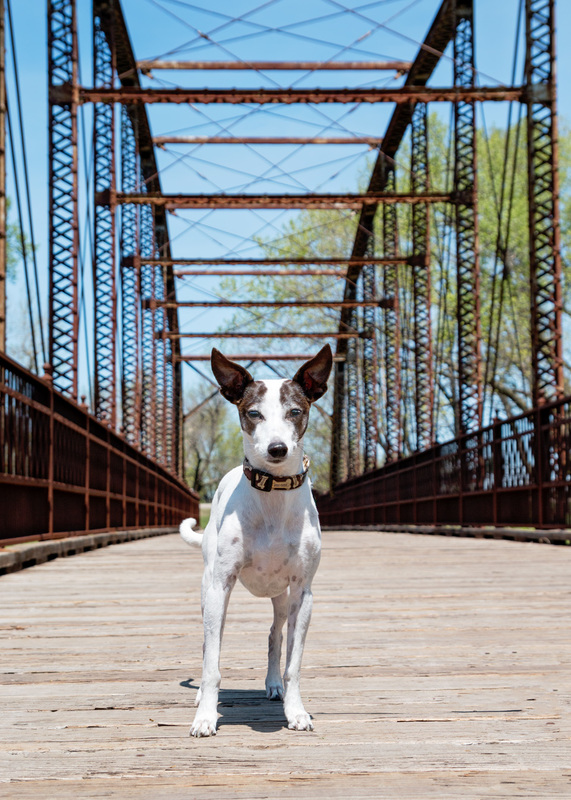|
These Project 52 posts consist of topics pulled from David Duchemin's book, The Visual Toolbox. Lines are a part of every good image. They can be physically visible lines or subtle lines built into the image, but every photo has them. These lines add interest to a photo, direct the eye, add depth, and they can also add energy. I took Hermes to the bike trail yesterday to get some images for this week's post. (Ok, and to get out of the house on a GREAT day weather-wise after dealing with a flooded basement for the past 2 weeks . . . It was a win-win to take him to the trails . . . and another win when I got a DQ s'mores blizzard afterwards.) ;O) First, we'll look at images that have physical lines in them. You have complete control over the lines in your images and can change what those lines do by simply changing the angle in which you shoot. The first two images are a simple example showing a dramatic difference. The first is shot head-on and the second is shot from the ground looking upwards. These images also have nice depth to them. This is because the lines travel into the photo making you feel like you are looking into the scene rather than at a specific element. In this next image the railing is seen as one diagonal line because of the way it tapers off on the right. Had I taken this picture of Hermes as a portrait (vertical) rather than a landscape image, the railing would have shown as vertical lines behind him and had a totally different feel. (Hermes isn't really giving me attitude; the sun was just super bright at 2 in the afternoon.) Looking at the image below, there is interest and depth, but I'm also able to lead the viewer's eye. The first thing you see is Hermes, but then the railing leads to the man on the bicycle. The man on the bike is an element that gives the viewer a little piece of the story that this image might tell. These next two journalistic style photos show how diagonal lines give energy to an image. In the first one, we see 3 dogs. We are able to see all 3 dogs at once and we say, "Awww, what cuties!" (You said that, right? ) In this second image we see Hermes, but then we see Walter, and then Dash (who is about to drop to the ground because he hates the wind and hits the dirt whenever there is a big gust - I think he might be living in the wrong state ). In any case, our eye goes from one dog to the other and then back again, sometimes multiple times. This is due to the fact that the dogs make a diagonal line. The diagonal line creates energy in the image and thus we want to stay and look a little longer. Without going into all the science of how we see things, it's also worth noting that the fact that we view this image from right to left, instead of left to right, also creates interest. I hope these Project 52 posts help you to see things you haven't seen before when you are taking pictures, be it with a camera or your cell phone. To continue around our Project 52 circle of pet photographers, please start with Becky at Future Framed Photography, South Dakota.
I hope you have a wonderful weekend . . . and just so you know, the DQ s'more blizzards are quite yummy. ;O)
4 Comments
Elaine
5/6/2016 08:20:49 am
I need to start an "I Love Hermes" campaign. Great images and comparisons. I now have to try a s'mores blizzard.
Reply
Kelly
5/6/2016 08:46:04 am
Hermes is quite the muppet. ;O)
Reply
Kelly
5/6/2016 08:58:27 am
Thank you, Susannah. ;O)
Reply
Your comment will be posted after it is approved.
Leave a Reply. |
Quoted...I can't really get them to say "cheese," but I can almost always make them smile. -Kelly Categories
All
|
© 2014-2024 Little White Dog Pet Photography. All rights reserved.
Feel free to share images with your friends, but please do not crop or edit photos. (Some of the more sensitive pets feel it makes their tushie look big. )
Feel free to share images with your friends, but please do not crop or edit photos. (Some of the more sensitive pets feel it makes their tushie look big. )






